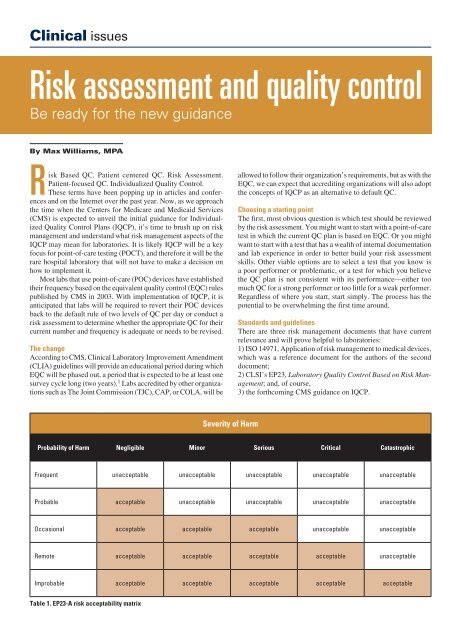

We will explain these concepts and provide examples so that you can expertly perform the process. Hazard Analysis, described in ISO 14971, is the most powerful of the risk management tools, but it is very confusing. Risk Analysis is required in a FDA product submission.įDA recommends using ISO 14971 as a guide and has accepted it as a recognized standard.

Requirements for each step of the risk management process, including the risk management plan, development of risk acceptability criteria, risk analysis, risk evaluation, risk control, risk/ benefit analysis, postproduction analysis will be explained.įDA expects that as part of a product development program risk management will be conducted and risks will be mitigated as far as practical.
RISK ANALYSIS ISO 14971 TEMPLATE SOFTWARE
Risk level can determine the extent of CAPA investigations, validations effort, etc.Īpplication of ISO 14971 principles to software risk management will be explained
RISK ANALYSIS ISO 14971 TEMPLATE HOW TO
We will explain how to integrate Human Factors studies into the Hazard Analysis and how to integrate Hazard Analysis into the design program. How to deal with residual risk will be discussed. Examples of hazards and hazardous situations will be discussed. We will go step by step through a template for risk analysis so that the process is clear. The confusing terms "hazard", hazardous situation", "harm", "causative event", "ALARP", "risk index", "benefit/ risk ratio", and "residual risk" will be explained. In this webinar we will explain in detail the process of conducting a hazard analysis. FMEA and FTA consider only fault conditions and are more suited as reliability tools than as product safety tools. This is the most powerful of the risk management techniques because it considers risks in normal operation as well as fault conditions. Hazard Analysis is described in ISO 14971. FDA also expects that a post production risk management program be implemented.įDA recommends using ISO 14971 as a guide and has accepted it as a recognized standard. He has 5 issued patents.The US FDA expects that as part of a product development Design Control Program risk management will be conducted. He is certified by Lloyds of London as an ISO 9000 Lead Auditor and is a member of the Thomson Reuters Expert Witness network. Mechanical Engineering from NYU and a M.B.A from Drexel University. His QS experience includes design control, risk analysis, CAPA, software validation, supplier qualification/control and manufacturing/non-conforming product programs.Įd has a B.S. Products included IVD devices, kidney dialysis systems and inhalation devices. Learn to conduct a meaningful hazard analysisĮdwin Waldbusser retired from industry after 30 years in management of development of medical device products and development of company Quality Systems. we will explain these concepts and provide examples so that the process is clear.Įxplanation of Hazard Analysis terms hazard analysis process explanation using a template examples of terms will be given hazard analysis examples will be covered step by step Hazard Analysis is the most powerful of the risk management tools described in ISO 14971 but it is very confusing. FDA recommends using ISO 14971 as a guide and has accepted it as a recognized standard. We will explain how to integrate Human Factors studies into the Hazard Analysis and how to integrate Hazard Analysis into the design program.įDA expects that as part of a product development program risk management will be conducted. We will go step by step through a typical hazard analysis. Also, how to deal with residual risk will be discussed. Overall risk-benefit analysis must take place in any case, regardless of the application of criteria established in the risk management plan of the manufacturer. We will go step by step through a template for hazard analysis so that the process is clear. EN ISO 14971:2009 EN ISO 14971:2012 and European ERs Residual risk management and risk-benefit analysis Risk reduction need not be performed if the estimated risk(s) is so low. The confusing terms “hazard”, hazardous situation”, “harm”, “causative event”, “ALARP”, “risk index”, “residual risk” will be explained. In this ISO 14971 risk management training we will explain in detail the process of conducting a hazard analysis. One of the techniques described in ISO 14971 is Hazard Analysis. The US FDA expects that as part of a product development Design Control Program risk management will be conducted.įDA recommends using ISO 14971 as a guide and has accepted it as a recognized standard.


 0 kommentar(er)
0 kommentar(er)
